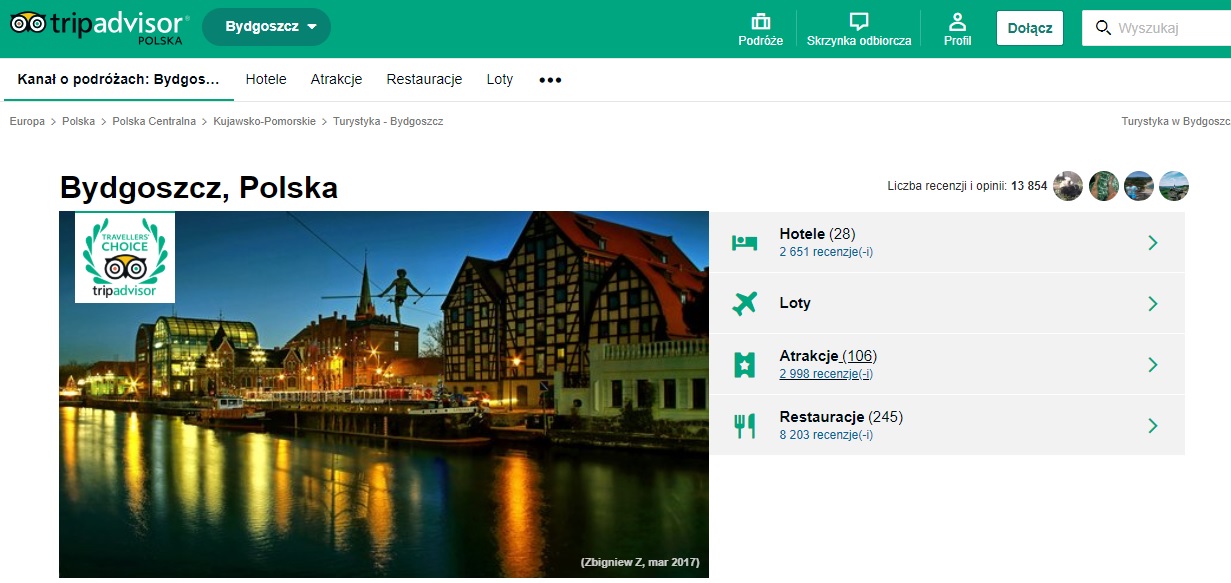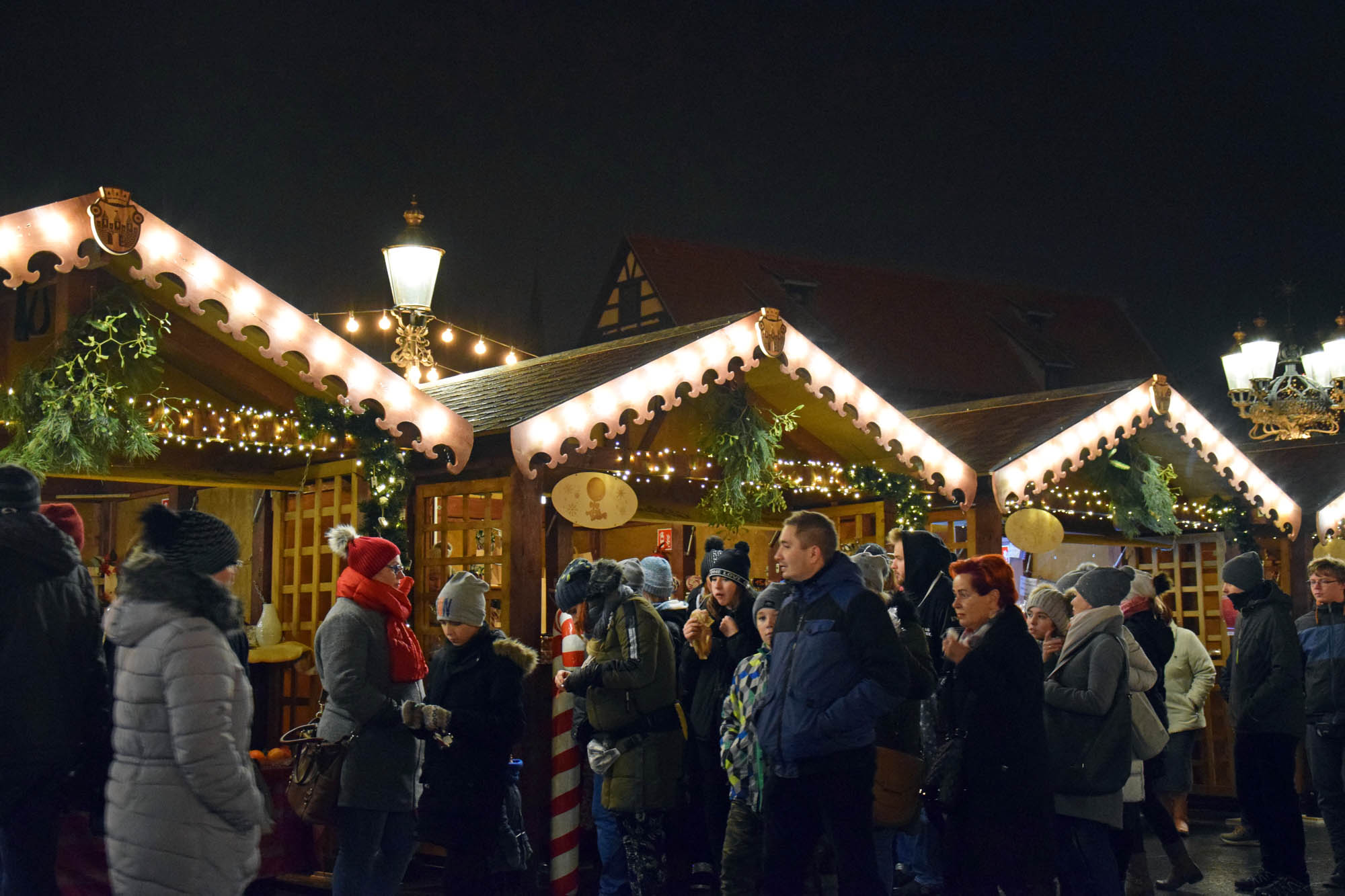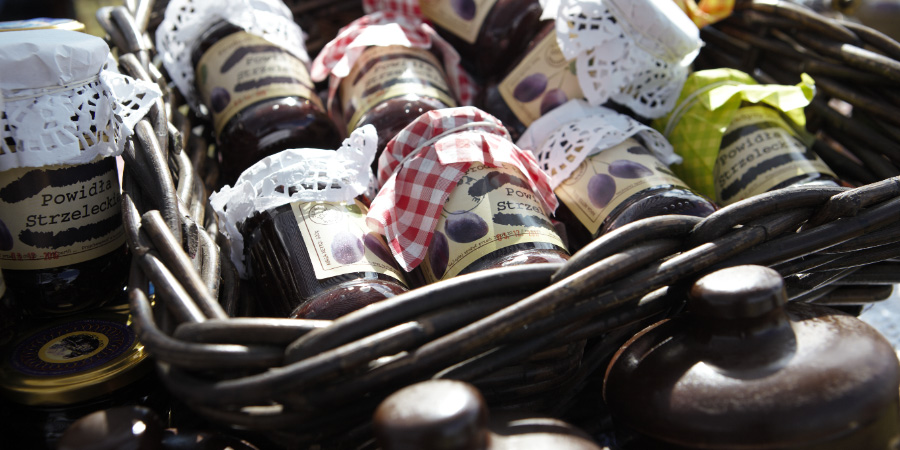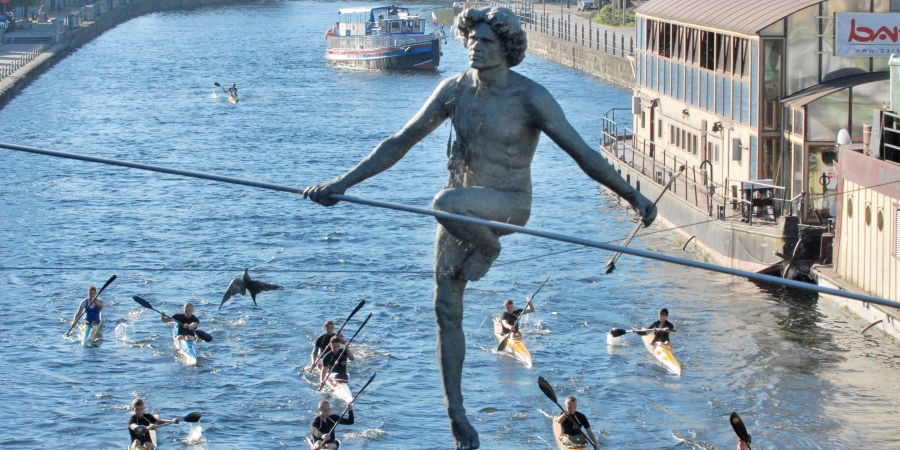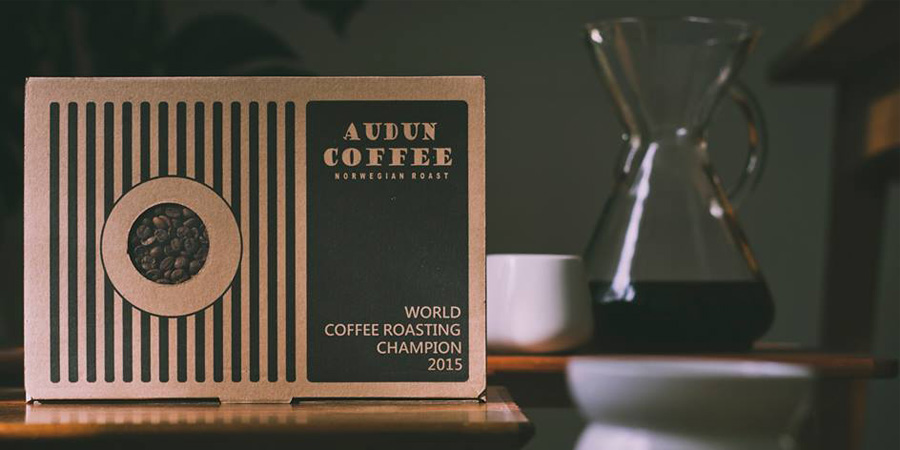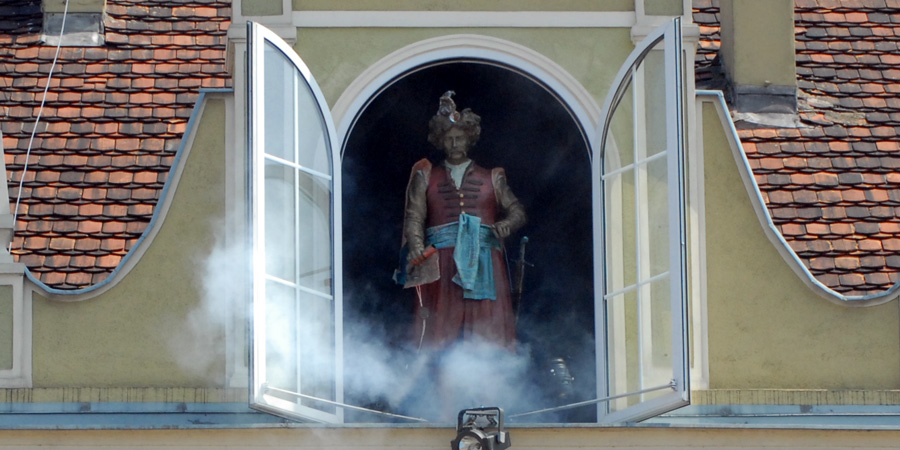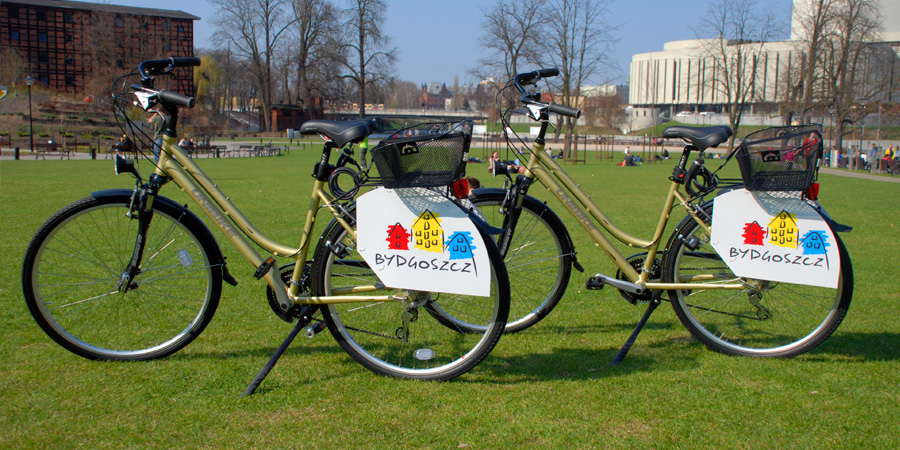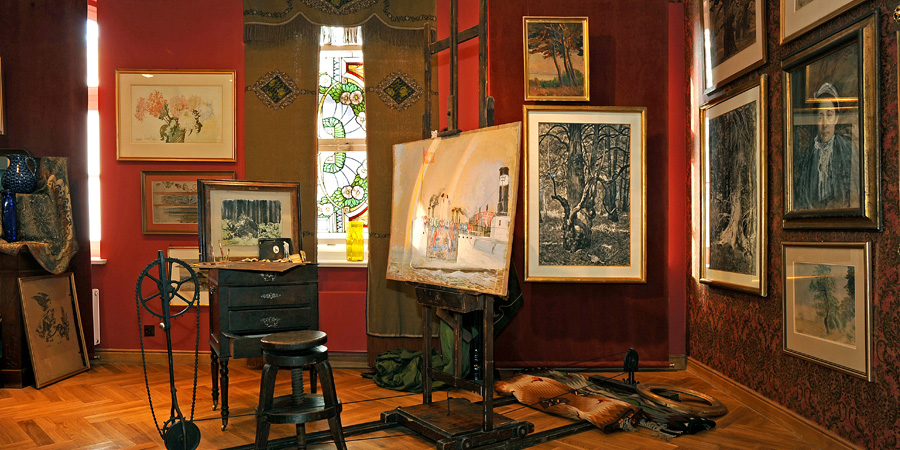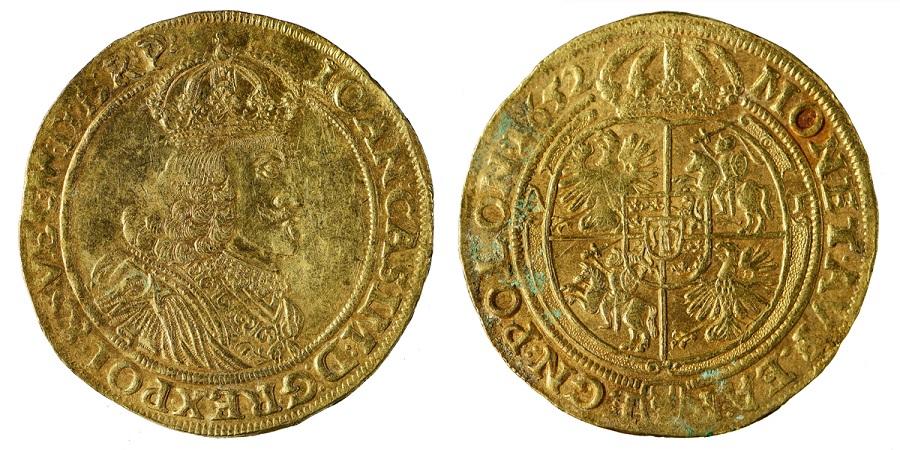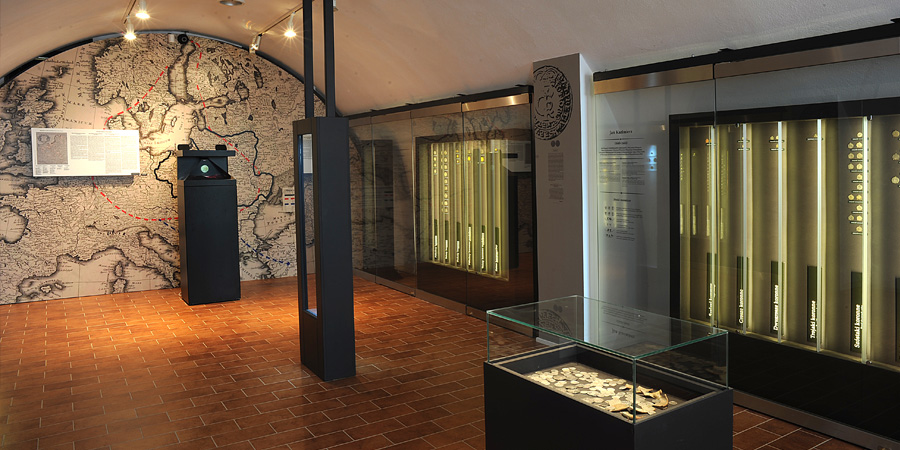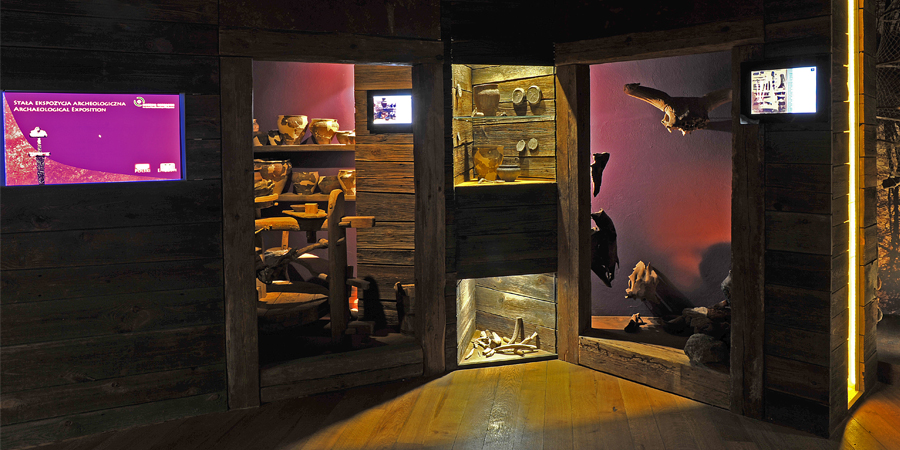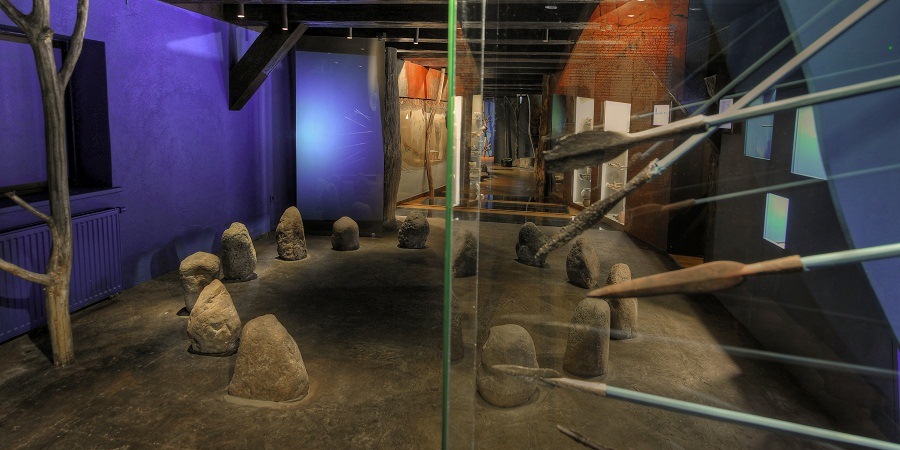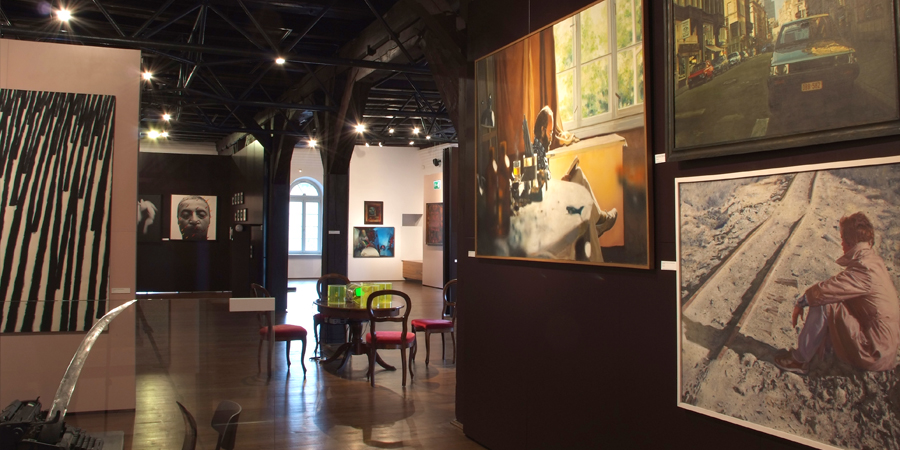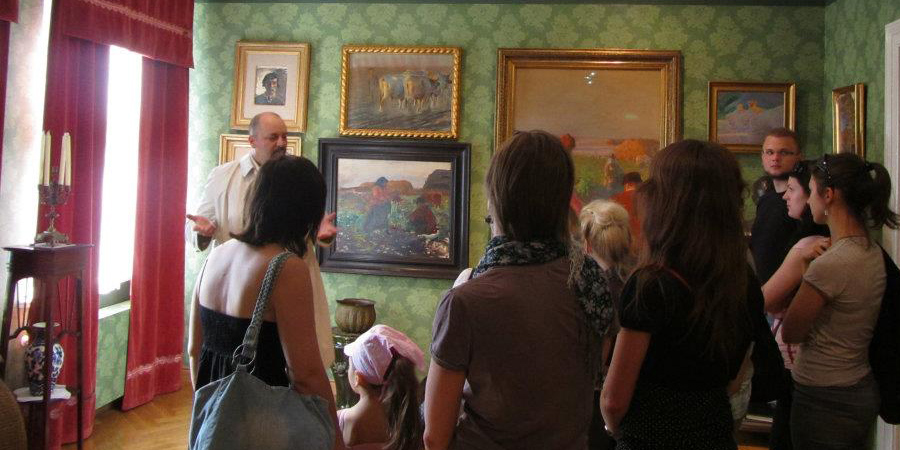 The beginnings of the museum in Bydgoszcz date back to the last two decades of the 19th century. In 1880 a Historical Society for the Netze District was founded, the aim of which was to conduct scientific research concerned with the region. Scientific works were accompanied with thecollecting activity. The collected objects provided substructure for the collections of the Municipal Museum established later on. The number of historical objects was growing quite rapidly, mainly thanks to the generosity of the donors.
The beginnings of the museum in Bydgoszcz date back to the last two decades of the 19th century. In 1880 a Historical Society for the Netze District was founded, the aim of which was to conduct scientific research concerned with the region. Scientific works were accompanied with thecollecting activity. The collected objects provided substructure for the collections of the Municipal Museum established later on. The number of historical objects was growing quite rapidly, mainly thanks to the generosity of the donors.The concept of founding a museum in Bydgoszcz was realized no sooner than after the city was taken over by Polish authorities. The idea came from a circle of people gathered around the Municipal Library. In 1922, its curator, father Klein together with Stanisław Łabendziński took care of the remains of the heritage of the Historical Society, and in May 1922 the collections were taken over by father Klein – at the request of the municipality. The Town Hall designated the building of a former Municipal Savings Bank located at the Old Town Market under number 2 for the needs of the future museum. As a result of the cooperation between the organizers and the City Board, a new cultural institution – Municipal Museum – was opened on 5 August 1923. Father J. Klein became its first general director. Shortly after the opening, Kazimierz Borucki was hired to perform the function of a conservator and archivist.
The newly established Municipal Museum had within its yet small collection historical items from the fields of archeology, history, numismatics and ethnography. Thus, the most urgent task consisted in enhancing the collection. The call made by the municipality met with the response of many people, including Duchess Maria Ogińska from Potulice. The search for guild souvenirs was also commenced. The so-far gathered items for the Museum collections did not include any paintings. That is why, on the initiative of the mayor, Bernard Śliwiński, the first paintings were purchased for the new gallery. This led to evoking the desire to gather in the Municipal Museum a collection of works of a Bydgoszcz citizen, Maksymilian Antoni Piotrowski, to become a part of the gallery of Polish painters.
The post of the Museum's director was taken over by an art historian, Tadeusz Dobrowolski, PhD. He contributed to a major enhancement in the Museum's resources of the works of art. A Municipal Gallery catalogue published in 1929 included 195 paintings and 28 sculptures, and the list of artists consisted of 96 names. Unfortunately, Bydgoszcz was not able to keep the remarkable specialist in the person of Tadeusz Dobrowolski. In July 1926, the City Council passed a resolution according to which the activity of the Municipal Museum was to be limited and the personnel reduced. As a result, on 1 August 1927, Doctor Dobrowolski moved to Katowice. The only full-time employee that remained was Kazimierz Borucki, and the entity in charge of the Museum was Museum Commission. Such a situation was maintained until the outbreak of the war.
Despite personal perturbations, the collections of the Museum were systematically enhancing. It was possible thanks to the favourably disposed community of Bydgoszcz. The donations made up most of the collected historical items and works of art. The poor museum funds did not allow for a greater scale purchases, and the grants were rather small and sporadic.
A quite significant event in the history of the Municipal Museum was the acquisition of a grand collection of works and souvenirs after Leon Wyczółkowski in 1937. The donation included oil paintings, drawings, aquarelle paintings, graphics, the equipment from his studio and personal souvenirs and decorations – altogether 942 items.
Almost at the same time, thanks to the efforts made by Doctor Witold Bełza, Konstanty Laszczka – a friend of Wyczółkowski's – donated a collection of sculptures. Both those extraordinary gifts were displayed in the building of a former Borderland Dormitory situated at 2 Chodkiewicza Street.
At the end of August 1939, the collections of the Municipal Museum consisted of 6,803 items, half of which were archeological – 1,900 items, 873 – numismatic, 210 – handcraft specimen and souvenirs from Bydgoszcz, 200 – ethnographic (including African items), 160 medalists' works and 150 – military.
Besides collection gathering, the fundamental function of the Museum consists in the exhibiting activity. The authorities of Bydgoszcz, by establishing the Municipal Museum, wanted to provide its population with souvenirs connected with the city's past, familiarize it with Polish art, activate local artists. Within the years 1923-1939 the Museum hosted about 120 exhibitions.
What was also quite significant and fruitful, was the participation of the Museum in the general cultural and artistic movement. The Museum refused to be a dead, closed institution and actively participated in all the artistic events taking place in Bydgoszcz. The pedagogical, popularizing and creative activity of the Bydgoszcz artists caused gradual transformation of the initially passive attitude of the environment. This was largely owed to the Museum's management and the related Artistic-Cultural Council established in 1934. The Council's aim was to replace the missing patronage of the state with enthusiasm and social effort. Its mission was unexpectedly very successful. The creation of favourable atmosphere for artistic and cultural activities depended on a variety of factors, mostly based on generosity of only a few enthusiasts, favour of the management of the Municipal Museum, and sympathetic support of the municipality.
The successful growth of the Municipal Museum was interrupted with the outbreak of World War Two. During the 15th Convention of Museum Associations held in June 1939 in Poland it was recommended to secure museum collections in case of war. Methods of proceeding were determined during a conservatory and museum conference that took place in Poznań. Activities aiming at securing the most precious exhibits began to be carried out according to the specified recommendations. Massive chests were prepared for selected paintings, graphics, artistic industry products, and more valuable archeological and historical exhibits. On 24 August 1939 the expositions in the building of a former Borderland Dormitory at Chodkiewicza Street were removed. It was decided that the chests with historical items would be stored in the massive basement in a house situated at 5 Podgórna Street. The dislocation was commenced as late as on 1 September. Due to the current situation transportation was impeded and many of the exhibits were left at the Museum premises at the Old Town Market. The building was closed and secured against the possible attempts of break-ins.
After German army entered the city, curator Kazimierz Borucki was called by the Polish authorities that were still remaining in power, for the purpose of presenting a report on security of the collections. He was also ordered not to leave the city and take further care of the collections of the Municipal Museum.
After Bydgoszcz was taken over by the occupying German administration, the city was incorporated into the Third Reich as a part of the Reichsgau Danzig-Westpreußen district established on 27 October 1939. This state of affairs was reflected in the situation of the Municipal Museum. It was still owned by the city and was subject to the municipal administrative authorities. The only novelty was its subordination to the museum curator in relation to the content of its collections. This post was held by Professor Willy Drost from Gdańsk (Danzig). For approximately one year, the Museum was in the care of a supervisor appointed by the authorities, and then the director's post was restored. On 17 October 1940, this position was assigned to the former guardian of the collections of the Historical Society for the Netze District, Doctor Konrad Kothe. He remained in that post until 21 Januaryt 1945. Kazimierz Borucki was still the Curator of the Museum.
After occupation of Bydgoszcz began, the collections of the Municipal Museum were still stored in the mother building at the Old Town Market and in the provisional shelter at 5 Podgórna Street. After the occupier started to tear down the western frontage of the Old Town Market, the moving of the collection began and was not complete until the end of the war. Initially, the storeroom for the museum collections was a parish "Catholic Home" located at 1 Grodzka Street. The moving took place in November and the beginning of December 1939. When German authorities decided to turn this building into a chamber music hall, the management of the Museum faced the necessity of finding a new place. In the end, the Museum received the building of a former Pawnshop located at Pocztowa Street. The building had several unquestionable advantages – its rooms were large, dry and heated, which, from the conservation point of view, was of great significance. The moving was carried out at the end of April 1941, and this is where the collections waited to see the city's liberation.
The fact that Bydgoszcz became incorporated in the Third Reich ensured protection against plundering the collections and enabled conducting of the basic activity, though limited due to war conditions. Due to the difficulties with the premises, the museum collections were hardy ever made public and, to a large extent, remained in chests. However, collective activity was still carried on. During the entire occupation period, approximately 1,500 items were obtained, both as donations and through purchases. At that time Polish inventories were used, since, as Konrad Kothe reported, "conducting another verification of collections and preparing new inventory records in German was beyond the capabilities of a two-person staff". With the help of municipal administrative authorities it was possible to conduct repossession of a ceremonial sword of the Judicial Bench of Bydgoszcz that was placed in a museum in Lvov. In 1944 a matter that was awaiting resolution for over 20 years was at last finalized. In March, repossession of exhibits belonging to the Historical Society for the Netze District that had been moved to Berlin during the war was carried out (unfortunately did not include all of them).
The activity of the Municipal Museum during the Nazi occupation focused on the protection of collections and, to a much smaller extent, on arranging exhibitions. The latter activity, though impeded by the lack of the Museum's own place, was still taking place. In the years 1941-1944 it was possible to arrange 7 exhibitions, 6 of which were devoted to art. A part of those exhibitions presenting the current works of German artists provided an impression that the authors' intention was to create a kind of continuity of the pre-war "Bydgoszcz Salon". The only historical exhibition was held outside Bydgoszcz, and was of propagandist character. It was organized in 1941 in a bishop palace in Oliwa, and was titled Das deutsche Bromberg.
Although the new location at Grodzka Street served well as a storage place, still it did not allow for carrying out exhibiting activity. That is why in order to arrange exhibitions, the Museum had to use other rooms available in the city. Such rooms were made available by: schools at Wolności Square and Kopernika Street, a Civil Mess located at 20 Gdańska Street, and the Church of St. Vincent a'Paulo – where one of the floors of the residential wing was used for exhibiting purposes.
Protection and securing of the Museum's collections involved much more work. Implementation of martial law brought about various types of threats, the most serious of which were the military actions. German preparations for warfare against the USSR found its reflection also in the cultural sphere. In April 1941 the Museum's curator, Dr Willy Drost ordained securing of the most valuable cultural works in case of bombing through decentralization of collections. In July 1942, a part of the historical objects was placed in a fire-resistant vault of the Pawnshop that was the main seat of the Museum; however, the evacuation began on 21 June 1943 and lasted until 30 December 1944. The items were positioned mainly in the places within the district of Bydgoszcz. In most cases storage places were land estates. As it would become clear in the near future, the decision of decentralizing the collections aimed with the purpose of their protection was a completely missed one. The scattering of historical objects was one of the reasons for having to suffer significant losses.
After Bydgoszcz was liberated from the Nazi occupation, the broken up collections of the Municipal Museum were placed in the rooms of a former Pawnshop at Pocztowa Street. Due to such a situation, the task of an utmost importance was to obtain a new location. The old building of the Museum did not exist any more, however, the edifice of the former Borderland Dormitory used for exhibiting purposes until the outbreak of the war, managed to be saved. Unfortunately, it was still temporarily occupied by the Russian army that turned it into a transitional camp for German prisoners of war.
At the same time, other buildings that with some effort would be able to match the requirements of museum buildings were also taken into consideration. Kazimierz Borucki proposed adaptation of the building of, a former Municipal Hospital located at 4 Gdańska Street. Here it should be mentioned that the concept of using the former hospital was not a new one. Already in 1934 there was a project according to which after a new hospital would be approved for use, the old hospital should be assigned to the Museum. As a result of many efforts, the mayor of the city, Józef Twardzicki, decided that after the hospital was left by the army, it would be taken over by the Municipal Museum. Based of the mayor's assurances, that state of affairs was to be only temporary and with time the Museum would have the entire building at its disposal.
In January 1946 adaptation works began. The floor was designated for a painting gallery, whereas the available rooms on the ground floor were to provide place for the Bydgoszcz souvenirs and archeological items. Municipal authorities planned that the opening of the Municipal Museum would be a part of celebration of the 600th anniversary of the city's existence. The exact date was 11 April 1946, the date of birth and, a name day of an outstanding artist – Leon Wyczółkowski. Also on that day, the governor of the Pomeranian Province, Wojciech Wojewoda, led the opening ceremony of the Municipal Museum that, from that day on, was named after Leon Wyczółkowski. For the period directly following World War Two, prewar organizational forms were applied. In 1946, Leon Wyczółkowski's name was added to the name of the Municipal Museum.
Kazimierz Borcucki became the first postwar director of the Museum, and maintained that position until he retired in 1964. In the same year the Celebration Committee for the city's 600th anniversary finished its activity and the vacated rooms were adapted for exhibiting purposes. A part of the collections was transported from the previous storage house at Pocztowa Street. Those were solely exhibits necessary for the preparation of exhibitions, since the rest of the building was not yet at the Museum's disposal and it was not possible to arrange for the proper storage areas.
The Social Care Department had its seat in the museum building until July 1948. After it was moved, the Museum was closed for renovation works and department regrouping. At the beginning of 1949, a Communal Savings Bank presented the Museum with notice in relation to its using the rooms after the former Pawnshop due to the National Bank of Poland's taking over of the building. The moving of the remaining museum collections took place in April in the same year. In 1949 the Museum was put under state control.
The next task of great importance that needed to be carried out immediately after the war was determining the state of preservation of the collections. Those items that remained in the original place were intact. However, the situation of the items that were taken away was unknown. For this reason, almost immediately after the liberation, the staff of the Museum conducted inspections of the places to which the collections were moved. Among the 10 places to which the objects were taken, it was possible to save all of the museum collections in only one. In two other places the buildings burnt down together with the museum objects. In other places, the acts of vandalism and robberies were reported.
It was possible to precisely estimate general balance of war losses only in relation to works of art. That register enumerates 953 items, altogether including 1266 exhibits. In the case of the remaining collection groups, it is difficult to determine the exact extent of losses. The institution in Bydgoszcz is a museum of a historical and artistic profile. Some of the collections have a regional character, depict the history and culture from the Paleolithic era to contemporary times. At the moment of its opening after the war, the Museum barely had germs of four departments. The first departments to evolve were: the Department of Polish Art, Leon Wyczółkowski Department and Archeological Department. The Department of History was established as late as at the turn of 1958/1959.
At the moment, the Leon Wyczółkowski District Museum in Bydgoszcz is divided into the following departments of: Archeology, Industrial Architecture "Exploseum", Etnography, Graphics, History, Leon Wyczółkowski, Music, Numismatics, Art and Collection Inventories, Education and Promotion, Conservation, and a Library. Until 1975, the Leon Wyczółkowski Museum was an autonomous institution for the city of Bydgoszcz and the surrounding areas. In July 1975 the Museum was transformed into a District Museum and broadened its scopes of interest with the area of the Bydgoszcz province. However, history turned full circle and at present the Museum is once again subject to municipal authorities.
LeonWyczółkowski Museum in Bydgoszcz also had an episode of having out-of-town departments. At the end of the 1970's the Museum acquired two already existing institutions and one being under construction. In 1977, the exhibits gathered by the Tuchola Borowiak Cultural Society were placed in the Museum's care, and after the acquisition of the building and conducting adaptation works, on 27 September 1980, the Museum of the Tuchola Forest was opened. Another facility was the Narrow-Gauge Railway Museum opened in 1972 in Wenecja (Polish Venice), near Żnin. It was founded on the grounds of Wenecja railway station, at the railway line between Żnin and Ośno built in 1894. In 1978 the Town and Commune Office in Żnin handed this institution over to the District Museum in Bydgoszcz. A year later the Regional Museum of Żnin was also passed to the Museum of Bydgoszcz. In 1992 all the departments were put again under the administration of the local authorities.
Museum collections that survived the years of Nazi occupation remained unsorted for a long time. Initially it was due to their scattering, then to the lack of sufficient staff. Only the employment of some properly educated people, combined with the creation of suitable departments provided conditions for proper analysis of the museum collections. Gradually, inventory works were conducted and new inventory books were prepared. Those activities were completed around the year 1970; however, a part of the old inventories kept being used until mid 1960's. At the same time, the last portion of historical objects resting in chests since the end of the war, were retrieved.
The basic profile of the Museum's collective activity was formed even before the war, and underwent only minor modifications. Still, the focus was on developing the following groups of collections: contemporary art, works of Leon Wyczółkowski, historical objects related to the history of the city and the products of artistic handicraft according to Art Nouveau and art déco, as well as guild works, numismatic collections, including medals and archeological objects. The extension of the Polish contemporary art collection led to the creation of quite an extraordinary collection in the national scale, a collection by Aurelia Borucka-Nowicka. At present, the contemporary art collection is being extended by the so-called "new media" and design. On the other hand, the collection of the Museum's patron, Leon Wyczółkowski, was enriched with a wonderful gift of the Szulisławscy family of nearly 200 items, which was handed over to the Museum in 1948. The resources of the Department of History were thanks to the contacts with the army enriched in withdrawn elements of armament, uniforms and military equipment. Generosity of the Bydgoszcz community taking part, for instance, in the actions organized in collaboration with editorial staff of the Illustrated Polish Courier aiming at gathering handicraft souvenirs and materials related to the Polish soldiers held in Nazi POW camps, also contributed to the increase in the number of historical objects of the Museum. At present, the profile of gathering museum collections is being broadened with any daily-life objects of people living in urban areas until the end of the 20th century. Systematic activity within that scope is also conducted by the Department of Numismatics. It keeps complimenting its old coin collections with new emissions – both of coins and banknotes. Similar activities are carried out in relation to medals. The youngest departments of the Museum are the Department of Music, established based on of a phonographic collection by Adam Mańczak, including both music carriers and audio equipment, as well as the Department of Industrial Architecture.
In its nearly 90-year-old history, the Museum in Bydgoszcz experienced various periods. The years 1923-1939 were a period of creation and extension of the institution interrupted with the outbreak of World War Two. This period was followed with a time in which the task of an utmost importance consisted in protecting the collections. During postwar period, the Museum began to develop – its staff was enhanced, new departments were established, and the premises were extended with new buildings. In 1970 the works aiming at sorting out the collections were completed. From that moment on, the basic task consisted in preparing and enhancing the Museum's resources.
As time went on, the increasing collections caused the premises at Gdańska Street to become too confined. The new opportunities relating to the extension appeared at the beginning of the 1960's. After the fire of granaries located at Grodzka Street, city authorities decided to place a part of the collections of the Leon Wyczółkowski Museum in two of the remaining three granaries. After full-scale adaptation works, in July 1964, the granaries were approved for use. Another extensive redecoration of granaries took place in the years 1993-2006. When it was completed, the Museum had at its disposal an entire building complex.
In the second half of the 1960's an impressive project of Museum extension was created. It consisted of three stages of works concentrated in the western frontage of the Old Town Market. The author of this momentous project was Włodzimierz Padlewski from Sopot. The first two construction stages covered the new buildings, whereas the third phase provided for an adaptation and integration of the previously erected edifices with the building of a former Jesuit College, then being the seat of the National Municipal Council. This concept, however, never manager to go beyond the design stage.
Further possibilities of enhancing the Museum premises were discovered in 1975, with the concept of acquiring the Mill Island for the Museum's needs. The concept was to create on the Island a Museum Centre in a more feasible form. At the moment, the Leon Wyczółkowski District Museum administers 4 facilities on that area. In 2004 the Mill Island was a part of a revitalization programme co-financed with the Financial Mechanism of the European Economic Area. Within these activities, all of the Museum's facilities on the Mill Island underwent a thorough modernization. Archeological collections were placed in the building at 2 Mennica Street, the so-called "White Granary". In a neighbouring facility, at 4 Mennica Street, the European Money Centre was located. The largest building of the Museum, at 8 Mennica Street is the so-called "Red Granary," and the adjacent facility is called "the Miller's house". This is where Modern Art Gallery was opened together with an Informatory. Leon Wyczółkowski's works, on the other hand, were placed in the building at 7 Mennica Street. In 2008 the Museum obtained a group of facilities located within the industrial complex of "Zachem". This is where, in nitroglycerine production department (NGL-Betrieb) of former Dynamit-Aktien Gesellschaft, project "Exploseum" devoted to military production is being realized.








